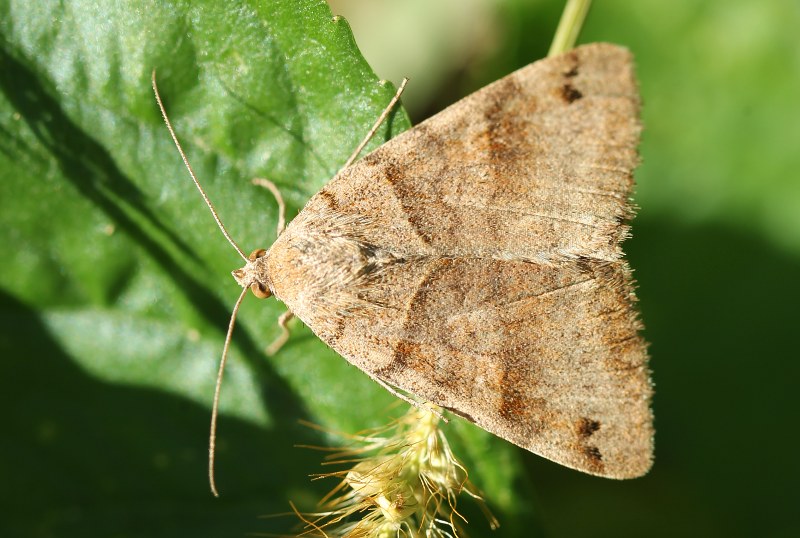On Wednesday, I heard something rustling in the grass near the Arboretum’s hickory collection. Turned out to be this garter snake (Thamnophis sirtalis), a skinny fellow who was quite afraid of me.
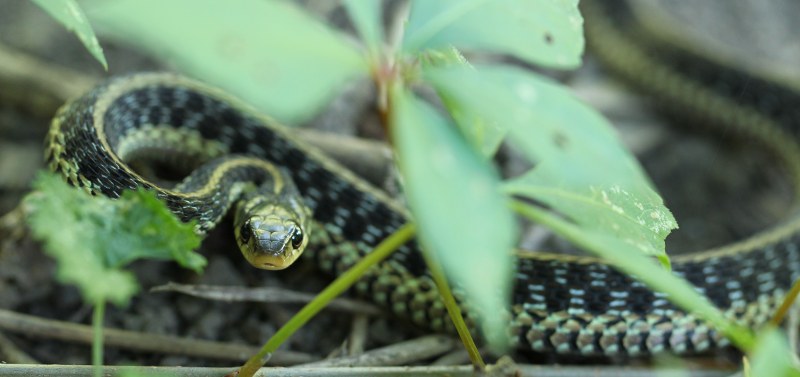
These snakes have yellow and black stripes, a red and black tongue, and usually yellow dots on top of their head. Their scales are keeled, which means each scale has a ridge running through it.
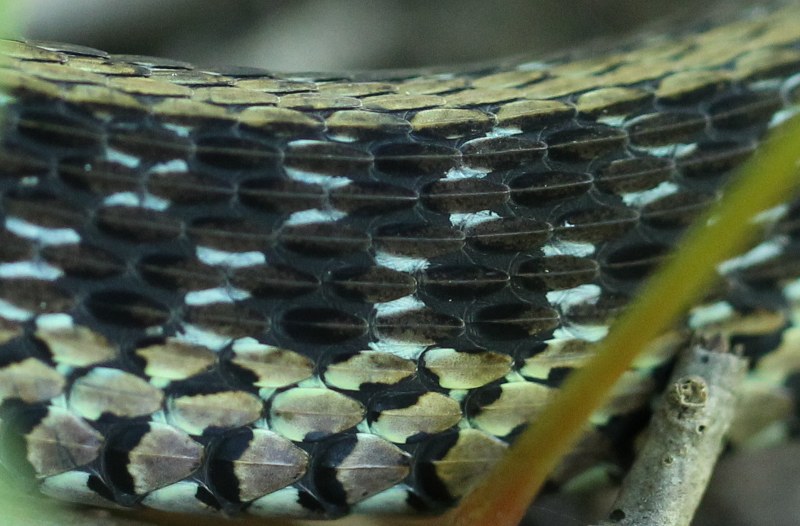
Although these snakes are harmless to humans, they look vicious when flicking their forked tongue.

Not too far away, an eastern chipmunk (Tamias striatus) scurried next to the stone wall, its cheeks full of food. This chipmunk should watch where it goes; it could become the garter snake’s next meal.

A very colorful leafhopper stood still on a leaf. This is the red-banded or candy-striped leafhopper (Graphocephala coccinea). It has yellow legs, a blue and orange thorax, and blue and red stripes on its wings.
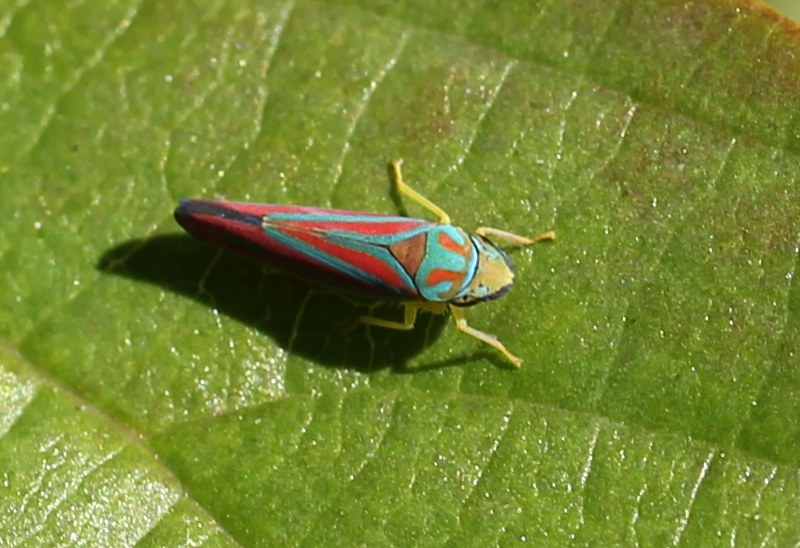
A side view shows the yellow head with a dark stripe running through the eye. Its wide throat looks very alligator-like.
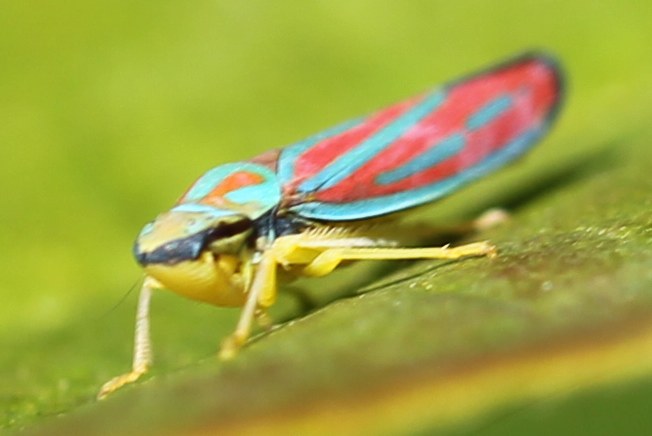
Also hanging out was this black scavenger fly (Sepsidae), which feeds on decaying matter. Thanks to v belov on BugGuide for the ID.

Another shot of this fly reveals a curious behavior. It flaps its wings while walking so that they end up stationary, perpendicular to the ground.
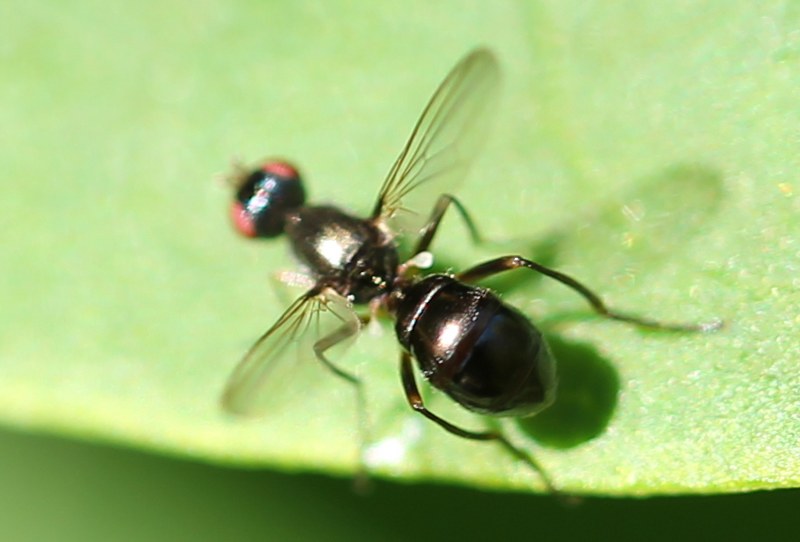
A black nightshade plant (Solanum nigrum) looked to be in bad shape, its leaves curled up, with holes and brown spots. I saw this black flea beetle (Epitrix) on the plant. Members of this genus are pests on potato plants; black nightshade is in the potato family. Thanks to v belov on BugGuide for the ID.
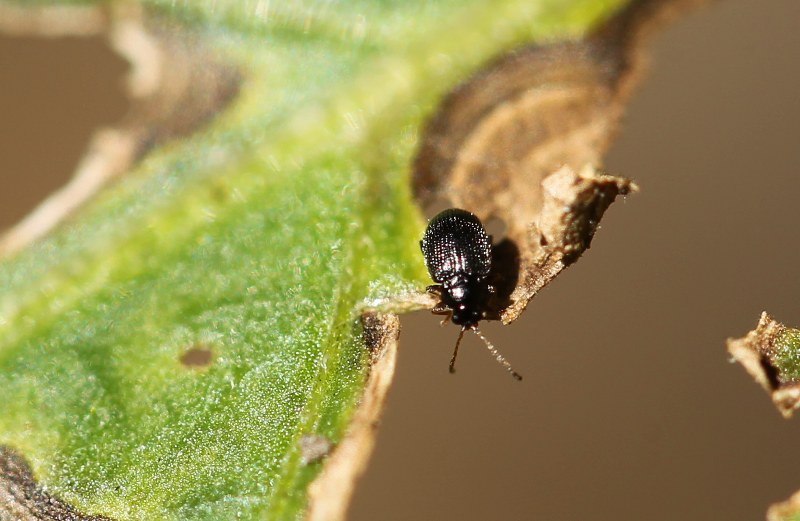
A few white wood aster (Eurybia divaricata) plants grew close together, raising numerous white flowerheads.
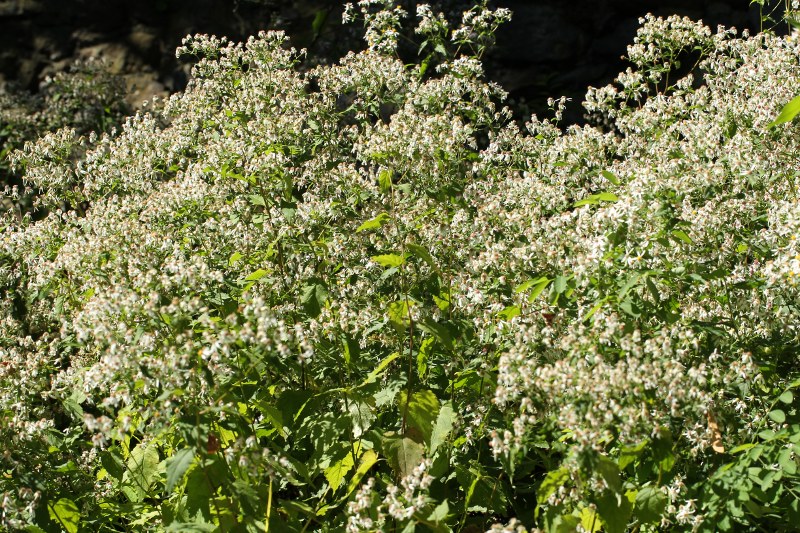
These aster flowers are still going strong, attracting pollinators.

A number of bumblebees (Bombus) took turns collecting pollen from the flowers.

Nearby, the osage orange tree (Maclura pomifera) had started dropping its large fruit. The fruit is wrinkled on the surface just like the human brain. There’s a theory that osage oranges are as large as they are because they were dispersed by large mammals which have gone extinct.

The Arboretum has some exotic trees as part of its collection. The epaulette tree (Pterostyrax hispidus) is one of them. Native to Japan and China, its fruit hang in twisted garlands, with rust-colored hair giving it a fuzzy feel.
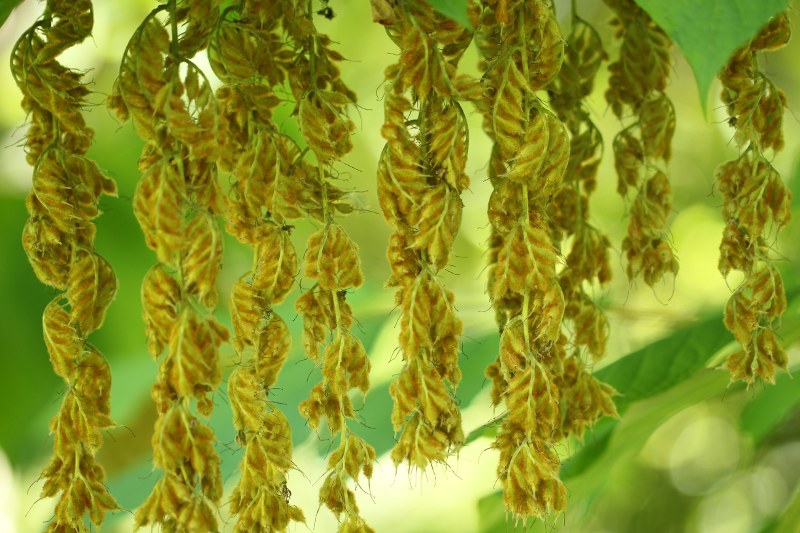

Finally, I scared up a moth hiding in grass. I think this is another clover looper, but its markings aren’t as distinct as the last clover looper that I saw. Perhaps it is a forage looper.
